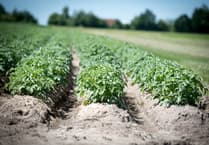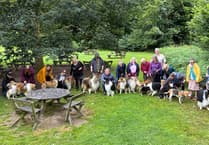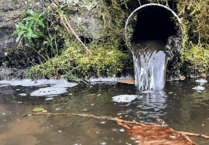Three Pen Llŷn farms have seen great success collaborating with the Llŷn Payment for Outcomes project.
The project, trialling farming techniques that work with nature and benefit farms commercially at the same time, has been adopted at Muriau Farm, and National Trust farms Cwrt Farm and Penrhyn Mawr Farm.
The Welsh agricultural community got to taste the fruits of the Llŷn farms’ labour, literally, at the Royal Welsh Show — in the form of high-quality beef which brings specific benefits to the environment and biodiversity of the area.
The farmers were rewarded for developing plans to maintain and improve nature within their businesses — and bring benefits to the quality of the soil and water — rather than receiving a general payment for generic farming methods that satisfy guidelines without specific outputs against them.
The results are measured and reviewed independently — and Welsh food wholesaler Castell Howell was very impressed with the quality of the cattle. As a result, they now buy the stock in order to produce beef to be served at Portmeirion, just 25 miles away from the farms.
Edward Morgan, Castell Howell’s Environmental, Social and Governance Manager, said: "We support hundreds of farmers across Wales every year — from meat to dairy products and vegetables. It is therefore nice to be able to recognise the farmers who have done all the hard work — and celebrate a supply chain that is truly complete.
"Castell Howell has a carbon reduction plan in place to help us reach net zero by 2050. So the more of our supply chain that encourages sustainable farming — not only for the good of nature, but for the long-term future of agriculture, the better."
Carwyn, one of three farmers who took part in the experiment who farms on National Trust land with the Wales Coast Path running through it, said: "I was very sceptical at the start of being rewarded for farming sustainably rather than for the farm's productivity level. But I realised very quickly that you have to work with nature, and not against it — and those results improve the quality of my product, too, as seen with the beef.
"I have really enjoyed being part of a plan that is not prescriptive and uses common sense, in a way, to farm for the good of nature — enabling me to plan for the future of the farm and pass on good practice to the children in years to come."
And it is not just the quality of the cattle that has benefited. On one farm, an increase of over 10 per cent was seen in the size of wildflower meadows after grazing with Hereford cattle — with the cattle's dung encouraging chough to feed there, and an increase in the presence of yellowhammer and hares.
On another farm where oats are grown as animal feed, the field was divided in order to keep it productive while encouraging colourful, rare flowers to grow at the same time. Welsh horses have also grazed overgrowth on the sea cliff, without the need for herbicides, and encouraging wildflowers to grow.





Comments
This article has no comments yet. Be the first to leave a comment.